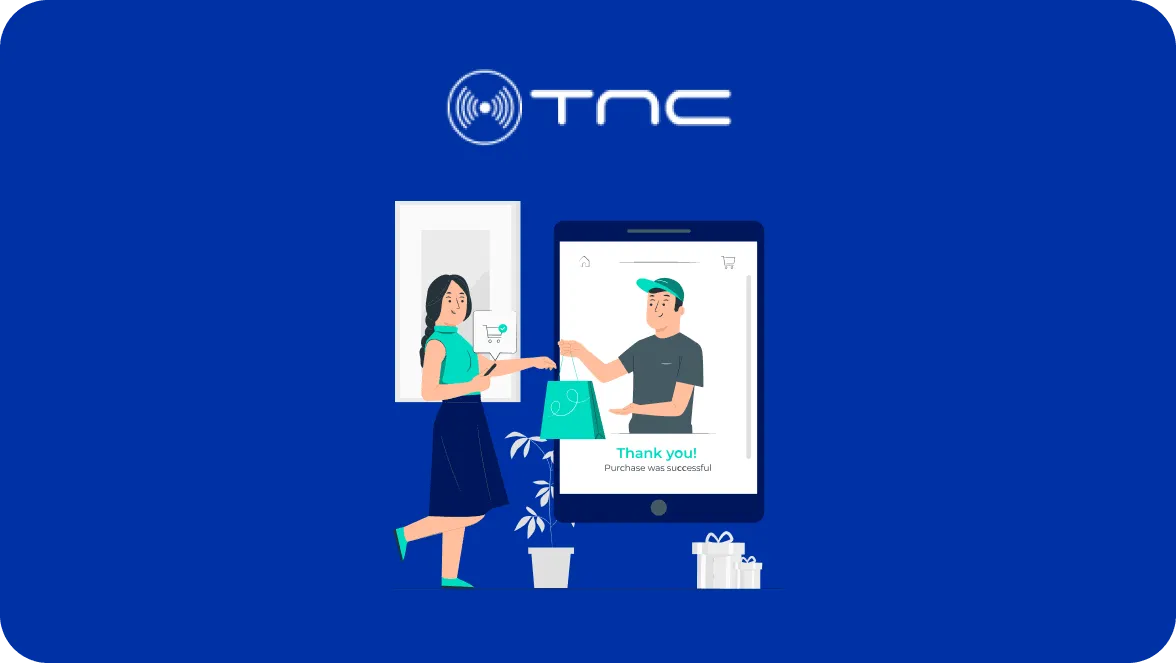
E-commerce companies are constantly looking to enhance customer experience (CX). The fact that CX can mean something different for everyone doesn’t make the task easier. On the one hand, technology keeps evolving. On the other hand, users are demanding even more. There’s no other way besides keeping up with trends and expectations.
So, what does a great customer experience in e-commerce entail? It involves every interaction with businesses at all stages of a buyer journey. It hides in the details. Selection of items, quick delivery, easy returns, pleasant communication, and good design add to CX. Thus, it has something to do with all channels and touchpoints.
DigitalSuits specializes in e-commerce development. Hence, we know how critical CX is in this competitive domain. In today’s article, we’ll share some recommendations and insights on customer experience management. Hopefully, you’ll find new ideas to improve the online experience for your customers and drive better business results.
Understanding the importance of customer experience
Why does customer experience matter so much? Let’s take a look at some numbers.
According to McKinsey, positive reviews shared online can result in up to 3x returns to shareholders. The right CX programs help companies deliver up to a 20% boost in sales conversion rates. It can also cut service costs by 20-50%.
eMarketer also confirms that word of mouth is an excellent promotion for businesses. And it only works if a consumer has a positive experience with a brand. 94% of people are ready to purchase again after a positive experience. 82% have recommended such companies to others. 80% are ready to forgive mistakes after a positive experience.
Shopify states that experience with a brand has a major influence on the purchasing decisions of 73% of consumers. Two-thirds of marketers admit that CX is their main niche for the competition.
You can probably find even more supporting evidence. But one thing is clear: CX matters a lot. So, finding ways to improve e-commerce customer experience will help you become more competitive.
Strategies to improve customer experience
So, how to improve e-commerce customer experience? There’s no one correct answer or a strategy that works for all. You’ll need to analyze your business processes and customer feedback, find gaps, and choose ways to address them. Here are a few ideas on how to build the best e-commerce experiences in 2024.
Make shopping convenient
What does “convenient” mean in this context? It’s about customer-centricity lying at the core of positive user experience. Aim to balance your business goals with customer preferences and expectations. Thus, you’ll shift towards building an excellent e-commerce shopping experience.
In simpler words, get to know your audience. What do they value in online shopping? Why do they choose you? Is there anything they would like to change or improve? When you start looking for these answers, you’ll see that convenience is at the core of each interaction. The easier and more pleasant online shopping is for users, the more likely they will return.
As for the more specific points, convenience may include the following:
user-friendly website themes (design, navigation, and search)
tools and add-ons for selecting size and fitting
detailed product pages with all specifications and important comments
high-quality images that illustrate the item’s color and other details precisely
simple and quick checkout flow that doesn’t request unnecessary data
various payment and shipping options available
clear return policy with an easy return process
an easy way to contact live support
good choice of packaging to balance the design and sustainability.
These are just a few ideas. As you can see, they concern very different aspects of a user’s interaction with the brand. Most are easy to implement technically. Knowing your customer will help you understand where to start the optimization.
Use emerging technologies
AI, ML, VR, IoT, 5G, and similar abbreviations may seem just buzzwords when used out of context. But better customer experience in e-commerce is the proper context to illustrate how they can benefit businesses.
For example, AI tools can cover a diversity of functions in e-commerce platforms:
Intelligent chatbots can provide quick answers to frequent queries. They can off-load human assistants and become smarter with time, utilizing the power of ML.
Using forecasting tools facilitates inventory management. You can see what items are in demand and control them remaining in stock.
Dynamic pricing tools allow adjusting pricing based on the current market conditions, competitor research, and other factors without manual calculations.
Another promising technology is AR. Here are a few e-commerce experience examples of using it by famous brands:
Sephora allows trying on makeup virtually before buying a product.
Warby Parker lets users try on all glasses virtually.
Amazon allows viewing furniture in your room. It also has virtual try-ons for shoes, clothes, and jewelry.
Emerging tech can improve both the business and client-related aspects. The only rule is to use them wisely. Don’t aim to pack the functionality with innovations. Learn if they’re going to facilitate shopping for users and fit in the product. Otherwise, the implementations will be a waste of time and resources. Rely on the rationale, not trends.
Continue with personalization
Personalization isn’t new for e-commerce. Still, there’s room to get it to the next level. In particular, it’s significant to align the marketer’s perception of personalization and consumers’ actual experiences.
A common use of personalization is showing the relevant featured products. Yet, the way of selecting them can differ. The items displayed are often just a logical pairing, a marketing move, or previous searches. However, AI can provide actual personalization. ASOS App’s recommendation functionality is an excellent e-commerce experience example.
Personalization isn’t only about the AI technology. It’s also about giving your customer a choice. Offering various delivery options, self-servicing, etc., also adds to the personalized experience.
Prioritize mobile experience
Mobile device usage is expected to reach 7.52 billion in 2026. Besides increasing adoption, smartphones have become functional enough to replace laptops for shopping. The situation is not likely to shift backward. Thus, it makes sense to focus on mobile experience.
Mobile-friendly platforms make it possible to shop anytime and anywhere. It works for all product categories: groceries, clothes, presents, luxury goods, and more. So, it’s in a company’s interest to make the shopping experience free of constraints. Network connection, screen size, and hardware shouldn’t interfere with shopping.
Mobile optimization should consider, among other things:
user-friendly shopping flow
fonts and buttons are accessible on smaller screens
lightweight, fast-loading pages
simple checkout processes
Apple Pay and Google Pay integrations.
Large businesses like Amazon and Walmart have well-thought-out apps and websites. Small companies are even more dependent on digital technology. It becomes a tool that allows them to stand out in the fierce competition. The focus on mobile can be a huge advantage and will undoubtedly influence CX positively.
Plan for omnichannel experiences
Maintaining an omnichannel system may seem complicated. Instead of a single touchpoint, the team needs to set up and support multiple ones. However, it simplifies shopping for a user, boosting e-commerce customer experience and revenue. Omnichannel experience makes users more likely to complete a purchase. Consider these two scenarios:
A user browses products on a retailer’s website using a smartphone. They complete a purchase after taking a closer look at the item on a laptop. A customer pays online but chooses a store pickup. That’s where the purchase completes.
Meanwhile, another user sees a product on social media. They contact a brand in direct messages to ask about some details. A person completes a purchase online and waits for the delivery.
Today, a user journey may be interrupted and later renewed using another channel. As a brand, you can provide a seamless experience. Integrating different resources into a single functional system enables flexibility and convenience that users always enjoy. You can also experiment with social and live commerce.
Provide reliable customer service
Customer service directly impacts customer satisfaction, loyalty, and retention. In McKinsey’s 2022 survey, respondents mentioned digital care among their top three priorities. What does effective customer service entail? In e-commerce, it encompasses the following:
responsive and polite communication
timely and effective issue resolution
knowledgeable and empathetic staff
personalized support and assistance.
There are many ways to improve customer care to deliver a better e-commerce experience. The most essential thing to do is set up multiple communication channels, making your team easy to reach. It’s also vital to have well-thought-out issue-handling procedures. It can include refunds, replacements, coupons, gifts, etc.
When you finish this, you can consider more uncommon ways to organize the customer care unit. For example, you can hire online assistants to consult clients about your items. It can be a stylist for a clothing shop, a cosmetologist in a skincare shop, and so on. You can also provide proactive assistance through reminders and emails.
Work on brand image
Customer acquisition costs have risen an average of 60% over the past five years. The reasons include high competition and a stronger focus on paid marketing instead of organic engagement. It often happens because brands fail to understand their audiences. Entrenched mindsets and blind spots lead to building the wrong strategies.
Building a solid brand image comes with many advantages:
Brands with a positive reputation are perceived as credible and reliable.
It influences the perceptions of the brand’s value proposition.
It can persuade customers to choose a particular brand.
A positive reputation can justify premium pricing.
It fosters loyalty and advocacy, driving new customers.
It builds resilience that can mitigate the impact of negative events.
Altogether, these things help deliver a better e-commerce shopping experience. Brand image sets expectations about products, services, and interactions. If a brand resonates with the customer’s preferences and values, they will choose it as an exclusive platform for shopping. Or at least they will add it to the top favorite shops.
Pay enough attention to marketing
Providing good CX requires effort. You often need to make changes and adjustments in the platform and work processes. Then, you need to make sure customers are aware of the benefits. That’s where marketing activities come along. Digital platforms open numerous opportunities to brands. But they also create much noise. You need a solid content strategy to support the brand image. It will help attract attention and deliver your messages. It should include more than good texts and multimedia. Consider the approach to online communication and interaction with users. Another approach that can boost customer experience is loyalty programs. They allow building a community around your brand. They also encourage staying with you longer. It’s encouraged by discounts, bonuses, special statuses, and similar things.
Marketing can improve the customer experience for e-commerce at all stages of brand interaction. Visually appealing content and influencer collaborations work well for awareness and discovery. Tutorials and user-generated content prove to customers that you are helpful and reliable. Every meaningful interaction is a bonus to the customer experience.
Best tips to improve customer experience
How to improve customer experience in e-commerce using the strategies above? Some tactical moves will help you implement these complex strategies.
Conduct thorough customer research
The way people shop has been changing for years. Customer habits and preferences are also affected by factors beyond technology and commerce. This can include economics and payment capability, social awareness, sustainability, and similar factors. Meanwhile, consumer behavior in emerging and growing markets is yet different.
What does it mean for e-commerce businesses? You can only deliver the best e-commerce shopping experience if you know your customers. A thorough research is a must. It’s also essential to update the customer portrait.
Keeping this information relevant will help your business stay customer-centric and competitive. Relying only on hypotheses about your customers is inefficient. You risk ending up with solutions tailored for an audience that doesn’t exist.
Invest in the right technology
On the customer side, you can set up AI chatbots and recommendations, enable AR tools, improve an e-commerce shopping cart experience, and so on. If there’s a way to fill the gap in consumer needs using a specialized tool, it always makes sense to try it out.
Meanwhile, there is a vast array of solutions that streamline business operations. With our specialized e-commerce consulting services and retail consulting services, you will identify and deploy the right tools to bridge consumer needs and improve customer satisfaction. Data analytics tools can process massive amounts of real-time user data to determine trends and patterns. With their help, your team will be able to make better decisions based on evidence and accurate predictions.
There are solutions to facilitate personalization, fraud prevention, and many other operational aspects. It doesn’t mean you need to connect as many tools as possible to your platform. Always invest in technology smartly. See which can help you achieve the set goals faster and start using those.
Use data-driven insights
The best e-commerce customer experience relies on evidence and facts. We’ve already mentioned the significance of user research. However, it is one of many data sets that belong here and help make better decisions. Besides customer segmentation and dynamics, you can optimize:
product recommendations based on browsing and purchasing history
sales funnel by analyzing user behavior on the website
inventory management via forecasting based on user and sales data
purchase completion by working with abandoned cart data
customer lifetime value by analyzing various aspects of user behavior.
Constant date monitoring and analysis can provide highly accurate insights for making informed decisions. You can automate a huge chunk of work, receiving precise data quickly. Even if you end up with several theories for A/B testing, they are still more accurate and evidence-based than ever before.
Set KPIs to track CX rates
It may seem obvious, but businesses don’t always have a clear set of metrics. Some fail to establish specific tracking periods. The KPIs cannot remain the same all the time. The team should monitor and update the target numbers. It’s essential to select meaningful parameters for tracking.
You can use some of the following values to measure customer experience for e-commerce:
conversion rate – the percentage of website visitors who complete a purchase
customer effort score (CES) – the ease of completing a transaction or resolving an issue
customer satisfaction (CSAT) – the overall satisfaction level
net promoter score (NPS) – the likelihood of recommending your brand
time to resolution (TTR) – the average time needed for your customer support team to resolve an issue.
You can also track customer abandonment rate, repeat purchase rate, average order value, and other data. The only requirement for these KPIs is keeping them realistic and relevant. And don’t get stuck on the numbers if they don’t align with the current state of affairs. Leaving too little time to achieve too high results may be tiresome and demotivating.
Adjust your CX strategy
Once again, don’t get stuck with an idea that doesn’t work. Getting focused on a strategy that isn’t effective distracts the team from actual problems. It’s okay if something doesn’t go as planned. There are a number of reasons why it may happen as you’re trying to improve customer experience e-commerce. They can include the following situations:
changing customer behaviors and expectations
new technology and market trends, new competitors
customer feedback and tada-based insights
scalability and expansion to the new markets
unpredicted social or economic changes.
It’s only a short list of circumstances that lie beyond your control and affect business operations. So, instead of aiming to prepare a perfect strategy, plan for risk diversification and handling. Stay agile. E-commerce is very dynamic. Flexibility will help you respond to the changes quickly and adjust the CX strategy accordingly.
Aim for sustainability
Experts anticipate e-commerce to grow at 10-20% annually, making up to 40% of total retail sales in 5-7 years. It would imply 0.5 gigatons of CO2 equivalent just for constructing the supply network. Aiming for sustainability in the long term is beneficial for consumers, businesses, and the environment.
Does sustainability affect e-commerce customer experience directly? It does – through several factors:
Responsible businesses drive the attention of ethical consumers.
Sustainability initiatives add to brand reputation and influence purchasing decisions.
Sustainable companies are more transparent and, thus, more reliable.
Sustainability is a shared value that creates a sense of community.
While sustainable companies are becoming a trend among customers, they are also more efficient. With IoT, cloud, and AI technologies, businesses can easily manage stock, inventory, and the entire supply chain. Among other things, it allows for cutting maintenance costs and reducing waste. It is especially crucial for the grocery sector.
Final thoughts
Customer experience is basically everything a business does to deliver excellent services. In e-commerce, CX standards are highly dynamic. Teams need to adjust accordingly, constantly monitoring trends and seeking new strategies. In a more general sense, you should aim to make every interaction with your business convenient and pleasant.
Positive CX may be individual for each user. Still, all value personalization, helpful customer support, and seamless mobile experience. If you add engaging content and memorable marketing, your chances to attract attention and turn potential customers into returning and loyal ones skyrocket.
So, now you know how to improve online shopping experience for your customers. Some strategies require technical enhancement of your platform. If you are ready to discuss the implementation or have any questions regarding it, let us know. The DigitalSuits team will be ready to help – from explaining how it works in practice to taking you through this journey.






































Was this helpful?
0
No comments yet